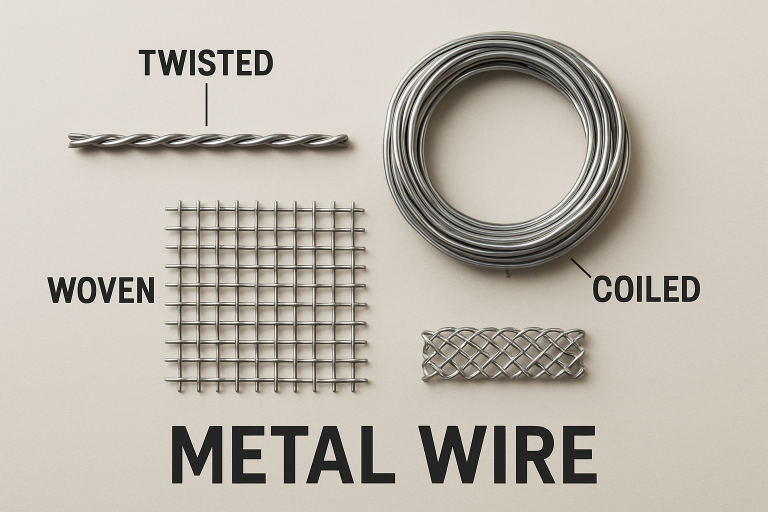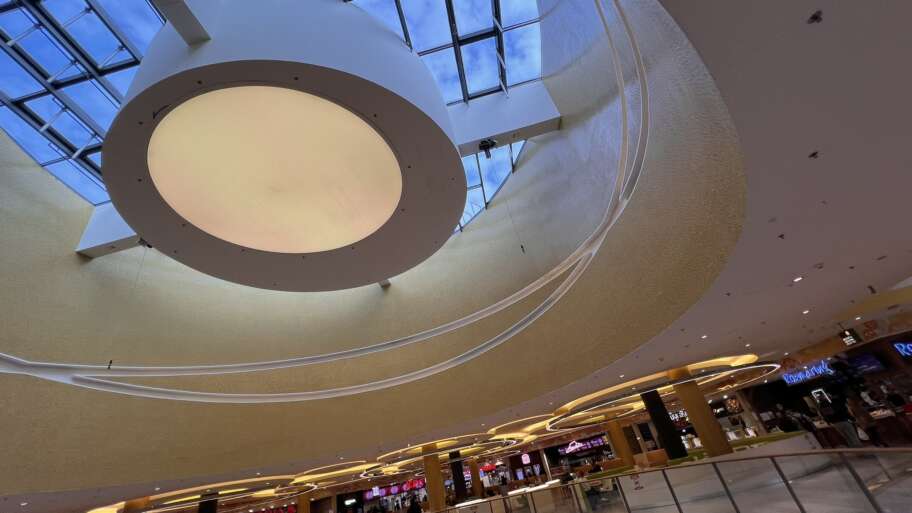Metal wire’s unique blend of flexibility and strength has made it a staple material for creative projects across numerous industries. Whether used in bold art installations or subtle home décor, metal wire continues to inspire innovation due to its diverse potential and striking visual impact. From sturdy steel cables to delicate threads of gold wire for jewellery making, the material’s applications are nearly limitless and always evolving to meet contemporary design needs.
As trends shift toward sustainability and multi-functionality, metal wire adapts to fit the changing landscape—serving as both a utilitarian component and an aesthetic feature.
Its malleability allows creators to sculpt expressive forms, reinforce structures, and even enable emerging technologies, all while offering eco-friendly avenues for upcycling and waste reduction. Modern designers and makers continue to push the boundaries with this versatile medium, discovering innovative techniques and unexpected combinations to address both practical and artistic challenges.
Artistic Expressions with Wire
Modern wire art takes on many forms, from intricate sculptures that twist and curl through space to large-scale installations suspended in public spaces. Artists often turn to metal wire due to its ability to create striking three-dimensional structures without overwhelming visual heft. This medium plays beautifully with light and shadow, encouraging viewers to engage with works from multiple perspectives.
Wire rope mesh, in particular, has empowered artists to create expansive installations that seem to defy gravity, inviting audiences into immersive environments. For deeper insight into how wire mesh uplifts creative freedom in art, this overview of wire in art installations showcases its innovative potential.
Beyond gallery spaces, metal wire is incorporated into everyday crafts, jewelry, and mixed-media art. It invites experimentation, combining materials such as glass beads, recycled objects, or ceramics to yield vivid and personal artistic statements. As artists strive to reduce their ecological footprint, many also rely on recycled or upcycled metal wire, further integrating environmental awareness into their work.

Wire in Architectural Designs
Metal wire elements are increasingly prevalent in modern architecture, where form and function often intersect. Architects use galvanized steel cables for their strength, longevity, and industrial appeal, shaping pedestrian bridges, railing systems, or dramatic artwork that animates urban environments.
These cables can also reinforce building facades, blending structural integrity with open, transparent design. Such installations transform public spaces, providing durability while enhancing cityscapes with visual texture and movement. If you’re curious how these materials contribute to the vibrancy of urban spaces, explore real-world examples of galvanized steel cables in city art.
In addition to dramatic installations, wire mesh balustrades and partition walls provide lightweight, see-through alternatives to traditional barriers, allowing for the preservation of natural light without compromising security. This marriage of utility with aesthetics has made metal wire a vital component in contemporary architectural vision.
Functional Home Décor
Interior designers and hobbyists alike appreciate the practicality and artistic flair of metal wire in home décor. Designers fashion everything from wire-wrapped jewelry and minimalist baskets to custom lampshades and wall art, harnessing the medium’s flexibility to suit a diverse range of interiors. Wire goods deliver a distinctly modern or industrial edge, yet their availability in various finishes, such as gold, copper, and matte black, allows for effortless integration into different aesthetics.
Those interested in innovative wire applications throughout the home can find inspiration from home décor designers working with metal wire.
The trend of integrating function with artistry can also be seen in wire organizers, hanging plant holders, and sculptural furniture accents—melding visual charm with purposeful design. This movement toward blending practicality and beauty resonates with individuals seeking not only to personalize their living space but to do so thoughtfully and sustainably.
Gardening and Landscaping
Metal wire also holds a celebrated place in the natural world. Gardeners rely on sturdy wire mesh, such as chicken wire netting, to craft trellises, cages, and barriers that support plant growth and protect against pests.
These versatile structures not only reinforce delicate stems and vines but also lend a rustic, handcrafted charm to the landscape. For creative and practical wire use in your own garden projects, see this guide on using chicken wire in home and garden applications.
Landscape architects often incorporate heavy-gauge wire into fencing, sculptural installations, and even outdoor seating, blurring the boundaries between nature, utility, and art in open-air environments.
Technological Advancements in Wire Usage
Cutting-edge technology has ushered in new types of wire mesh embedded with sensors to monitor structural or environmental conditions. These smart meshes take the practical strengths of metal wire further, offering real-time feedback critical for building maintenance and safety monitoring. Such innovations are transforming not only construction and infrastructure, but also agriculture and security.
For instance, sensor-embedded wire meshes are increasingly integral to sustainable building management, offering predictive insights that reduce maintenance costs and increase safety. Delve into the world of wire mesh technology with recent advancements in smart wire mesh.
Beyond buildings, the contributions of metal wires can be found in wearable technology and medical devices, where precise conductivity and flexibility are indispensable.
Sustainable Practices and Upcycling
Sustainability is at the forefront of modern design, and metal wire offers myriad options for upcycling and reuse. Artists and crafters transform leftover wire into jewelry, lamps, storage solutions, and decorative objects, breathing new life into what might otherwise be discarded as waste.
Upcycling wire is not only cost-effective and environmentally friendly, but it also presents creative challenges that often yield truly original results. For tips and plenty of project ideas, consider The New York Times’ guide to recycling and upcycling.
These sustainable practices empower both creators and consumers to rethink materials and champion eco-conscious living, ensuring a more resourceful and imaginative future.
Metal wire stands as one of the most versatile materials in both professional and DIY applications, bridging the gap between pure functionality and aesthetic appeal. Its malleability, strength, and varied finishes make it indispensable across industries ranging from construction to interior design, while its affordability and accessibility have made it a favorite among crafters and makers.
Structural and Functional Applications
In construction and industrial settings, metal wire serves critical structural purposes. Reinforcement wire mesh strengthens concrete foundations and walls, while tensile wire systems create modern railing solutions for staircases and balconies. These applications demonstrate wire’s load-bearing capabilities while maintaining a minimalist aesthetic that suits contemporary architecture.
Cable management represents another functional domain where metal wire excels. Wire cable trays and basket systems organize electrical installations in commercial buildings, data centers, and manufacturing facilities. The open structure allows for heat dissipation and easy access for maintenance, while galvanized or stainless steel options ensure longevity in demanding environments.
Agricultural applications showcase wire’s outdoor durability. Fencing systems, vineyard trellises, and greenhouse frameworks rely on galvanized steel wire to withstand weather exposure. The material’s resistance to corrosion when properly treated makes it suitable for permanent installations that require minimal maintenance over decades.
Decorative and Artistic Implementations
Beyond utility, metal wire has emerged as a sophisticated design element. Wire mesh panels in various gauges and patterns create striking architectural features—partition walls that maintain visual connectivity while defining spaces, decorative screens that cast intricate shadows, and façade elements that add texture and depth to building exteriors.
In furniture design, wire construction offers both transparency and strength. Wire chairs, from mid-century classics to contemporary designs, provide seating that appears to float. Storage solutions like wire baskets and shelving units combine industrial aesthetics with practical organization, particularly popular in Scandinavian and minimalist interiors.
Lighting design leverages wire’s ability to create three-dimensional forms. Wire pendant lamps, from simple cage designs to complex geometric patterns, diffuse light while serving as sculptural focal points. The material’s conductivity also makes it ideal for integrated LED installations where the wire itself becomes part of the lighting circuit.
DIY and Craft Projects
For hobbyists and crafters, metal wire opens endless creative possibilities. Wire jewelry making utilizes copper, silver, and brass wire in various gauges to create earrings, bracelets, and pendants through techniques like wire wrapping, weaving, and coiling. The accessibility of these techniques has made wire jewelry a popular entry point into metalworking.
Garden projects benefit from wire’s outdoor compatibility. Tomato cages, plant supports, and decorative garden stakes can be fashioned from heavier gauge wire, while delicate wire sculptures add artistic elements to landscaping. Wire mesh can be shaped into custom planters or used as climbing structures for vines and flowering plants.
Home organization projects frequently employ wire solutions. Custom closet dividers, magazine holders, and wall-mounted organizers can be fabricated to exact specifications. The material’s paint-friendliness allows for color customization to match any décor scheme.

Material Selection Considerations
Success in wire projects depends on selecting appropriate wire types. Stainless steel offers superior corrosion resistance for outdoor or moisture-prone applications. Galvanized steel provides good weather protection at lower cost. Copper wire develops an attractive patina and suits decorative projects where aesthetics evolve over time. Aluminum wire offers lightweight handling for large-scale installations.
Wire gauge selection impacts both workability and strength. Thinner gauges (higher numbers) bend easily for intricate work but lack structural capacity. Thicker gauges (lower numbers) provide strength but require appropriate tools for cutting and shaping. Most projects benefit from combining multiple gauges—structural elements in heavy wire with decorative details in lighter wire.
Conclusion
The ongoing evolution of metal wire as a creative and functional material underscores its importance in modern projects of all types. Its roles across art, design, architecture, gardening, technology, and sustainability demonstrate not only its adaptability but also its ability to inspire innovation and push boundaries.
As new technologies and design movements emerge, the possibilities for creative wire usage will only continue to expand, promising a future full of meaningful and groundbreaking projects.

